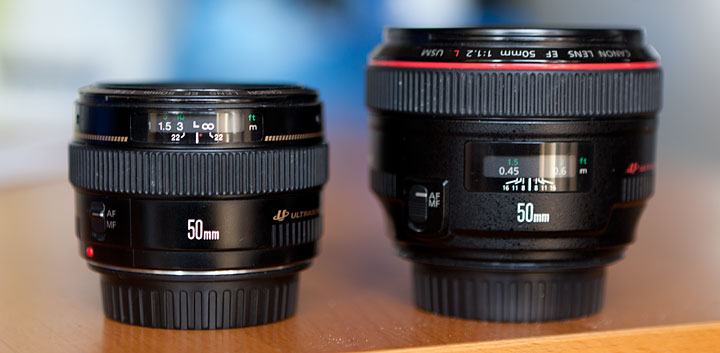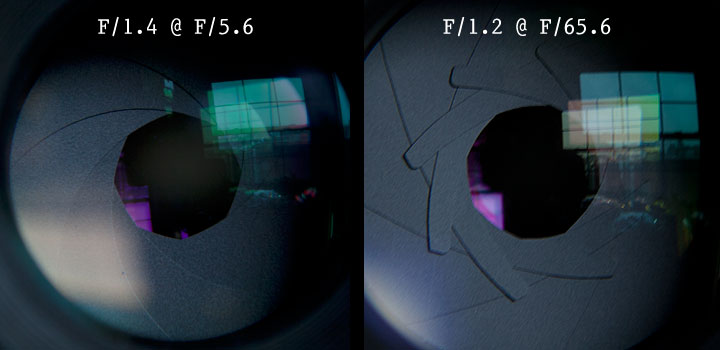
Many of the camera makers will make similar lenses at different price points. People ask me if it’s worth it to get the next one up. That is a very difficult question to answer, but I’m going to try.
Let’s start off by offering the fact that almost all modern lenses are really good compared to the past. Sure there are those people who swear by their dad’s ‘72 Nikor whathaveyou and 1950s Leica and the T* Zeiss stuff for Hasselblad glass is gorgeous, but for the most part, older 35mm lenses in particular, are not as sharp as modern lenses. They’re soft at the corners, have serious vignetting, and often much less effective lens coatings to control lens flare and such. Of course some people like these distortions and think they give their pictures a certain look, to which I say good for them. For me, I’d rather stick with modern glass when I work. So even a crappy zoom lens they throw in when you buy a cheap body is pretty good optically as long as you stop down the lens a bit. Lenses tend to get sharper as you stop them down (to a point, most hit their peak at f/8 or f/11). That said, a nice lens with a fixed focal length, or ‘prime’ lens as they’re called, can really up the image quality ante. Being a bit of a 100% pixel peeper myself, image quality is next to godliness.
Ok, now back to the issue at hand. There are a million examples of what I’m talking about, but I’m going to choose one easy one. 50mm Canon primes. Canon makes a 50mm prime lens with apertures of 1.8, 1.4, and 1.2. The last one being one of their L line of high-end glass. I happen to own all three of these, so I’m in a good position to talk about them.
My father bought me the 1.8 at a store in Danbury, CT after picking me up from the train on the way to my parent’s house about 6 years ago. It’s very light, somewhat fragile feeling, and has a strange focus ring which is on the front rim of the lens. You also can’t focus auto and manual at the same time. That said, it’s got two redeeming characteristics. One, it’s very sharp, especially when stopped down a tad. And it’s crazy cheap. $120 at B&H. If all you’ve got is a single zoom that came with your camera, this is the next lens to get. 50mm on the cropped sensor in a Rebel or 7D will act like a nice 85mm portrait lens. Very nice for the price. One additional thing about the 1.8. The current incarnation is the second and is made entirely of plastic right down to the mount. Apparently the first version had a metal mounting ring and a better focus mechanism. They’re prized on ebay from what I hear.
Next up is the 1.4 which has been out in it’s current incarnation for just about as long as the EOS brand has been around, so over 20 years. It let’s in another half stop or so of light, is about the same size as the 1.8 but a bit heavier. This is one of the last remaining lenses with the first generation ultrasonic motor. It’s not the smoothest or quietest focus, but you can do both auto and manual at the same time. For a couple decades, this lens was one of the photojournalist staples. The lens they put on the front of their new bodies in the magazine ads. It costs about $350 at B&H. There are constant rumors however, that they’re going to replace it with a more modern design any day now. That said, they’ve been on that rumor for years.
A little side story about the 1.4 I was on my way into the Time-Life building for a shoot a couple years ago and they’ve got airport like security where you put your bags through a scanner and walk through the metal detector. Well I picked up my camera bag on the other side and had forgotten to clasp it closed. So as I pick it up, there goes my 50mm 1.4 prime tumbling out of my bag, falling 3 feet onto a concrete floor. After a quick cringe I picked it up and threw it back in my bag since we were late to setup. I had dropped it before, it happens when you’re around them all the time, and it had been fine. However, this time in the middle of the shoot I took off the 28mm prime I was shooting with and clicked on the 50, only to find that the focusing mechanism was locked up. The fall had apparently push gears out of alignment. $160 to get it fixed and I had to shoot the whole shoot with a single wide-angle. It worked out ok in the end, and is not really a dig on this lens as I’m sure it would have happened to any similar glass. Just a good story.
Ok, finally is the 1.2L. This is a big, heavy, crazy fast lens which is built like a tank. Not the kind of thing you want to carry around on the front of your camera all day if you don’t have to, but for what I do, it’s lovely. Focus is silky smooth, though not the quickest since the motor has to move a lot of glass around in this design. Some people say that it’s not very sharp, but I say they’re crazy. At 1.2 if you get the focus right, it’s amazing. At 1.4 you need to wear gloves while editing because it’s so sharp it’ll cut you. The problem is that it’s also expensive, $1500 at B&H for example. I bought it for myself as a present after completing a big job a while back and have no regrets.
So here you’ve got 3 lenses, all within a stop of each other at $120, $350, and $1500. Is the next one up worth it? Well that depends on you and if you’ve got the money I suppose. That said, there are a number of other factors involved. For example, the 1.8 has 5 blades making up it’s aperture, where the other two have 8. And while both the fancier lenses have 8 blades, the ones on the 1.2 are curved more so that they make a more perfect circle (see image below). You’d notice this in the smoothness of the out of focus areas, or bokeh as the japanese say it, of the picture. The 1.8’s bokeh is nice, the 1.2’s is creamy.

Another place you’ll see a difference is in contrast. Not all lenses transmit the light similarly. Different designs of the various elements, composition of the glass in them, and even the coatings they put on the glass change the picture. Better lenses tend to leave more contrast in the image, both across the whole image, so-called macro-contrast, and within small sections of the image, so-called micro-contrast. Yes, you can do work in PhotoShop to get them close, and it’s really hard to measure this stuff in any meaningful way. But it my opinion, it’s definitely there.
Lastly is the obvious difference in aperture. It may not seems like a lot, but having the ability to capture an extra stop of light when it’s dark can really help. Plus as a creative tool, the plane of focus at 1.2 is crazy thin. Like when you’re focused on the eyeball, the eyelashes can be soft. Stuff further than a few inches off becomes a blur. This can be useful creatively, especially for a portraitist like me.
Now whether all of that is worth over ten times the price is debatable. My camera is my livelihood and so I tend to buy the best because they’re my tools and I want them to last and feel good in my hands while I use them. For other people it’s different. If you’re a street shooter who walks around stopped down to f/8 and hyperfocal distance, then by all means get the 1.8 and shoot the crap out of it. It’ll be much better than that kit lens you’ve got and may open your world to the wonder of prime lenses. Next up will be my favorite lens of all time, the 28mm/1.8
